
East Lothian is one of the 32 council areas of Scotland, as well as a historic county, registration county and lieutenancy area. The county was called Haddingtonshire until 1921.

East Lothian is a constituency of the Scottish Parliament (Holyrood) covering most of the council area of East Lothian. It elects one Member of the Scottish Parliament (MSP) by the plurality method of election. It is also one of nine constituencies in the South Scotland electoral region, which elects seven additional members, in addition to the nine constituency MSPs, to produce a form of proportional representation for the region as a whole.
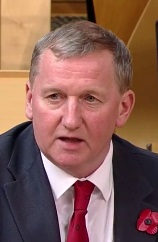
Elections to Fife Council were held on 3 May 2012, the same day as the other Scottish local government elections. The election used the 23 wards created as a result of the Local Governance (Scotland) Act 2004, with each ward electing three or four Councillors using the single transferable vote system form of proportional representation, with 78 Councillors elected.
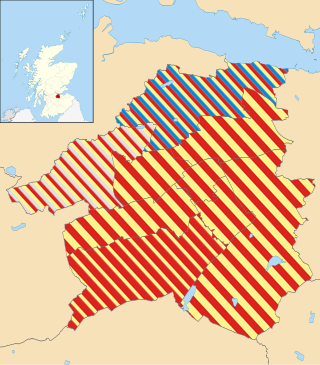
The 2012 West Lothian Council election took place on 3 May 2012 to elect members of West Lothian Council. The election will use the 9 wards created as a result of the Local Governance (Scotland) Act 2004, with each ward electing three or four Councillors using the single transferable vote system form of proportional representation, with 33 Councillors being elected. The Bathgate Ward gained an additional seat for the 2012 elections. The election saw Labour remain the largest party on the Council as they gained 2 seats. The Scottish National Party also made 2 net gains and significantly increased their vote share, outpolling Labour in terms of votes cast. The Scottish Conservative and Unionist Party retained their single seat on the Council and so to did the Independents. The Action to Save St. John's Hospital group were completely wiped out from the authority losing all of their 3 seats.

2012 Elections to East Lothian Council were held on 3 May 2012, on the same day as the other Scottish local government elections. The election used the 7 wards created as a result of the Local Governance (Scotland) Act 2004, with each ward electing three or four councillors using the single transferable vote system form of proportional representation, with 23 councillors elected.

The 2012 South Ayrshire Council election took place on 3 May 2012 to elect members of South Ayrshire Council. The election used the eight wards created as a result of the Local Governance (Scotland) Act 2004, with each ward electing three or four Councillors using the single transferable vote system form of proportional representation, with 30 Councillors being elected.

Elections to Dundee City Council were held on 4 May 2017 on the same day as the other Scottish local government elections. The election used the eight wards created as a result of the Local Governance (Scotland) Act 2004, with each ward electing three or four Councillors using the single transferable vote system. A total of 29 Councillors were elected.

Elections to Fife Council were held on 4 May 2017, the same day as the other Scottish local government elections. The election used the 22 wards created as a result of the Local Government Commission for Scotland's 5th review which was published in September 2016, with each ward electing three or four councillors using the single transferable vote system form of proportional representation, with 75 councillors elected; a decrease of three seats from 2012 as one ward, The Lochs, was abolished.
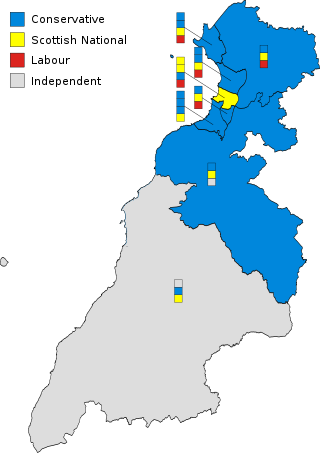
The 2017 local council election to South Ayrshire Council was held on Thursday 4 May 2017, on the same day as the 31 other local authorities in Scotland. It was the third successive Local Council election in South Ayrshire to run under the STV Electoral System. Following the election, a coalition administration was formed between the SNP, Labour and Independent councillors, despite the fact that the Conservatives remained the largest party on the council, increasing their lead over the SNP by 2 seats.
The 2017 elections to Inverclyde Council were held on Thursday 4 May 2017, on the same day as the 31 other local authorities in Scotland. It was the third successive Local Council election to run under the STV Electoral System. The election used seven wards created under the Local Governance (Scotland) Act 2004, with 22 Councillors being elected, an increase of 2 from 2012 and an additional ward. Each ward elected either 3 or 4 members, using the STV electoral system.

The 2017 West Lothian Council election took place on 4 May 2017 to elect members of West Lothian Council. The election used the 9 wards created as a result of the Local Governance (Scotland) Act 2004, with each ward electing three or four Councillors using the single transferable vote system form of proportional representation, with 33 Councillors being elected. The election resulted in no overall party majority, leading to the Labour Party and the Conservative Party forming a coalition administration.
2017 Elections to Falkirk Council were held on 4 May 2017, the same day as the 31 other local authorities in Scotland. The election used the nine wards created under the Local Governance (Scotland) Act 2004, with 30 councillors being elected, a reduction of 2 members from 2012. Each ward elected either 3 or 4 members, using the STV electoral system.

The 2017 Renfrewshire Council election took place on 4 May 2017 to elect members of Renfrewshire Council. The election was first to use the twelve wards created as a result of the 2015-16 Boundary Commission review, with each ward electing three or four Councillors using the single transferable vote system, a form of proportional representation, with 43 Councillors being elected, a net increase of 3 members compared to the 2012 Council.
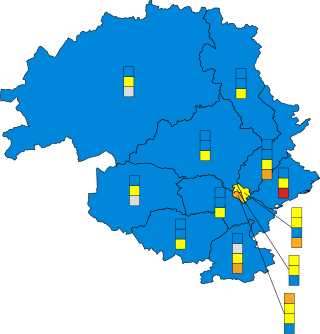
Elections to Perth and Kinross Council were held on 4 May 2017, the same day as the other Scottish local government elections. The election covered the twelve wards created as a result of the Local Governance (Scotland) Act 2004, with each ward electing three or four councillors using the single transferable vote system form of proportional representation, with 40 Councillors being elected, a reduction of 1 member compared to 2012.
2017 Elections to North Lanarkshire Council were held on 4 May 2017, on the same day as the 31 other local authorities in Scotland. The election utilised twenty-one wards with 77 Councillors being elected. This represented an increase of 7 seats and 1 additional ward when compared to 2012. Each ward elected either 3 or 4 members, using the STV electoral system.
The 2017 Highland Council election was held on 4 May 2017 to elect members of the Highland Council. The election used the 21 wards created under the Local Governance (Scotland) Act 2004; each ward elected three or four councillors using the single transferable vote system. A total of 74 councillors were elected, six less than in 2012.

The 2017 Dumfries and Galloway Council election took place on 4 May 2017 to elect members of Dumfries and Galloway Council. The election used the twelve wards created as a result of the Local Governance (Scotland) Act 2004, with each ward electing three or four councillors using the single transferable vote system form of proportional representation, with 43 councillors being elected, a reduction of 4 members and 1 ward since 2012.
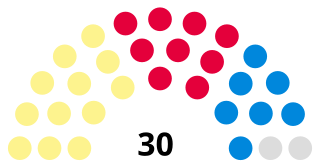
The 2022 elections to Falkirk Council were held on 5 May 2022 on the same day as the 31 other Scottish local government elections. The election will use the nine wards created following the Local Government Boundary Commission for Scotland's 5th Review, with 30 councillors being elected. Each ward elected either three or four members, using the STV electoral system.

2022 Elections to Stirling Council were held on 5 May 2022, the same day as the 31 other local authorities in Scotland. The election used the seven wards created under the Local Governance (Scotland) Act 2004, with 23 councillors being elected. Each ward elected either 3 or 4 members, using the STV electoral system.
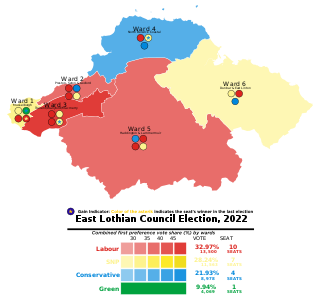
The 2022 East Lothian Council election took place on 5 May 2022 on the same day as the 31 other Scottish local government elections. The election used the 5 wards created under the Local Governance (Scotland) Act 2004, with 18 councillors being elected. Each ward elected either 3 or 4 members, using the STV electoral system.




















